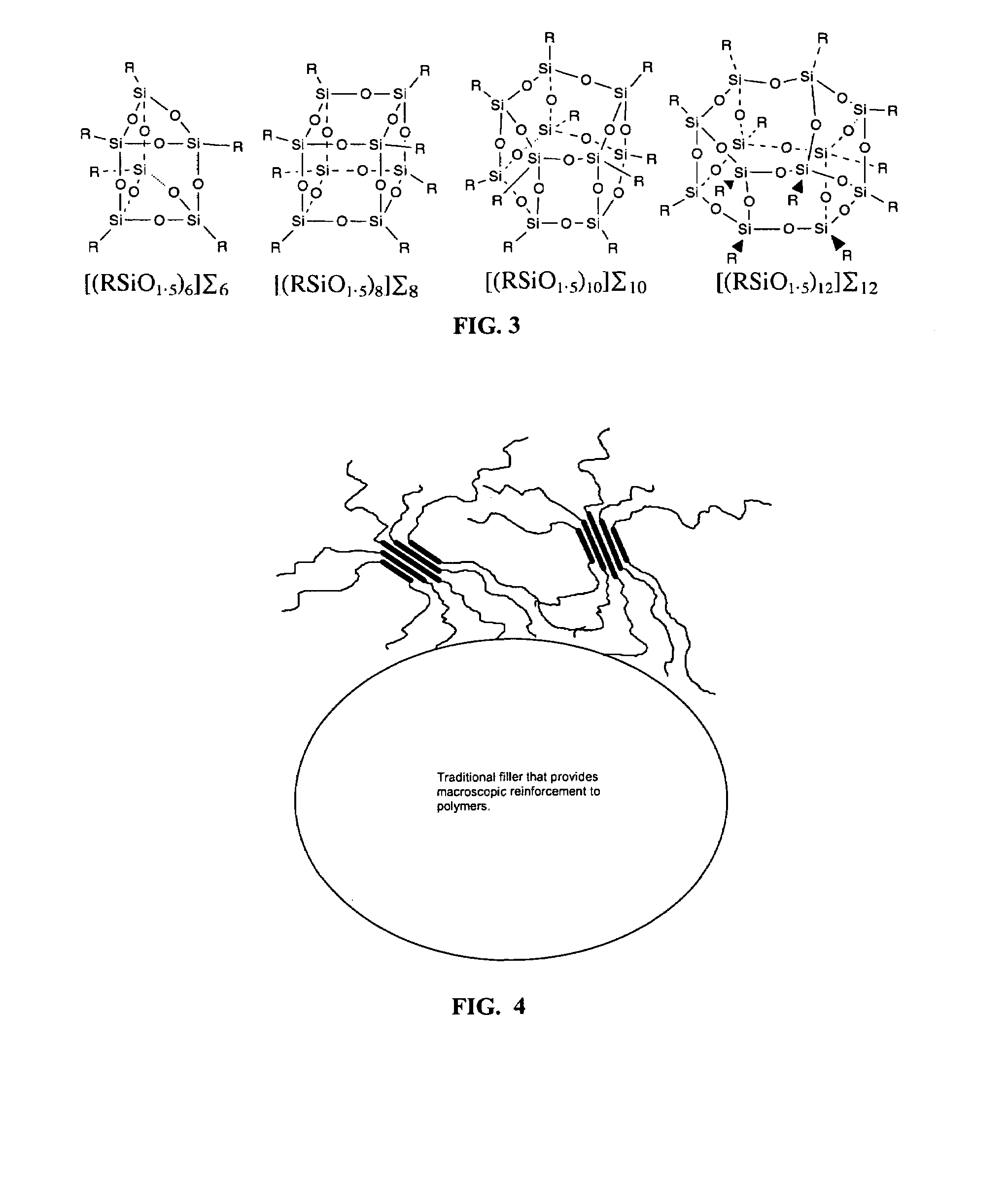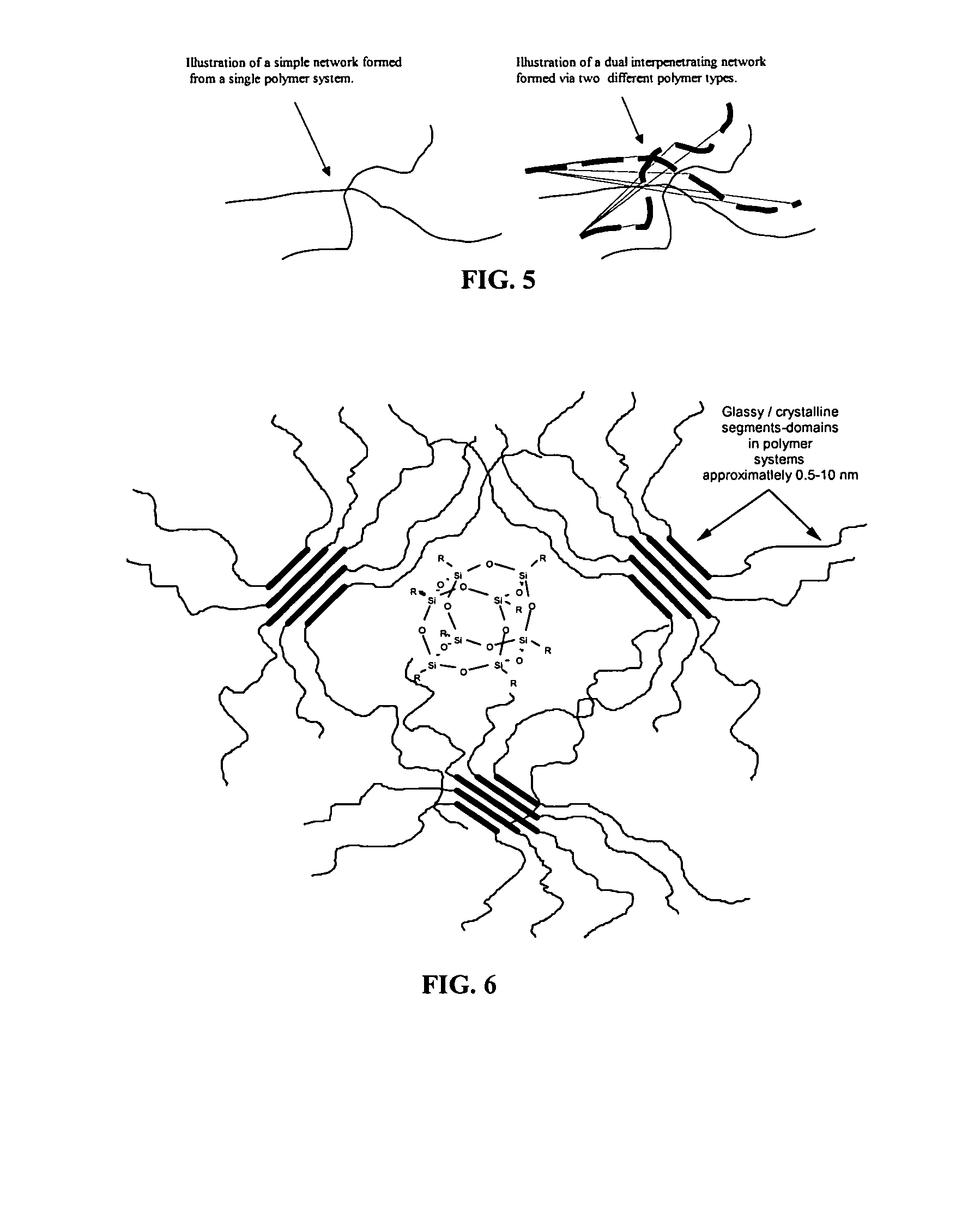Nanostructured chemicals as alloying agents in fluorinated polymers
a technology of fluorinated polymer and nanostructured chemicals, which is applied in the field of methods, can solve the problems of limiting the ability of conventional fillers to access the free volume region, affecting the effect of the length scale of the reinforcement, and all the prior art suffers from process complexity, etc., and achieves the effects of reducing melt viscosity, favorable impermeability, and low dielectric constan
- Summary
- Abstract
- Description
- Claims
- Application Information
AI Technical Summary
Benefits of technology
Problems solved by technology
Method used
Image
Examples
example 1
Synthesis
Example 1a
[0041](Heptadecafluoro-1,1,2,2-tetrahydrodecyl)triethoxysilane (6.10 g), deionized water (0.27 g), and potassium hydroxide (2.088 mg) were added to a 10 mL volumetric flask. The balance of the volume to 10 mL was filled with ethanol. The contents were transferred to a 25 mL round bottom flask with a Teflon covered magnetic stir bar. The contents were stirred at room temperature overnight under nitrogen. A fine white powder was formed. The product was rinsed with ethanol and dried. A 92.3% yield of pure [(RSiO1.5)8]Σ8) was obtained. 29Si NMR δ:—66.76 ppm.
example 1b
[0042](Tridecafluoro-1,1,2,2-tetrahydrooctyl)triethoxysilane (5.10 g), deionized water (0.27 g), and potassium hydroxide (2.088 mg) were added to a 10 mL volumetric flask. The balance of the volume to 10 mL was filled with ethanol. The contents were transferred to a 25 mL round bottom flask with a Teflon covered magnetic stir bar. The contents were stirred at room temperature overnight under nitrogen. A fine white powder was formed. The product was rinsed with ethanol and dried. A 92% yield of pure [(RSiO1.5)8]Σ8) was obtained. 29Si NMR δ:—66.69 ppm.
example 2
Melt Compounding
Example 2a
[0043]Poly(vinylidene fluoride) (PVDF) was used. PVDF (Hylar 460) was obtained from Solvay Solexis. The melting temperature determined by differential scanning calorimetry (DSC) was in the range of 150–164° C. [(3,3,3-TrifluoropropylnSiO1.5)n]Σn was blended into PVDF using a twin screw extruder (MicroCompounder, DACA Instruments). The PVDF and POSS were mixed thoroughly for 3 minutes at 177° C. Three samples were prepared with POSS weight percents of 2.5%, 5%, and 10%, respectively.
PUM
| Property | Measurement | Unit |
|---|---|---|
| length | aaaaa | aaaaa |
| length | aaaaa | aaaaa |
| sizes | aaaaa | aaaaa |
Abstract
Description
Claims
Application Information
 Login to View More
Login to View More - R&D
- Intellectual Property
- Life Sciences
- Materials
- Tech Scout
- Unparalleled Data Quality
- Higher Quality Content
- 60% Fewer Hallucinations
Browse by: Latest US Patents, China's latest patents, Technical Efficacy Thesaurus, Application Domain, Technology Topic, Popular Technical Reports.
© 2025 PatSnap. All rights reserved.Legal|Privacy policy|Modern Slavery Act Transparency Statement|Sitemap|About US| Contact US: help@patsnap.com



